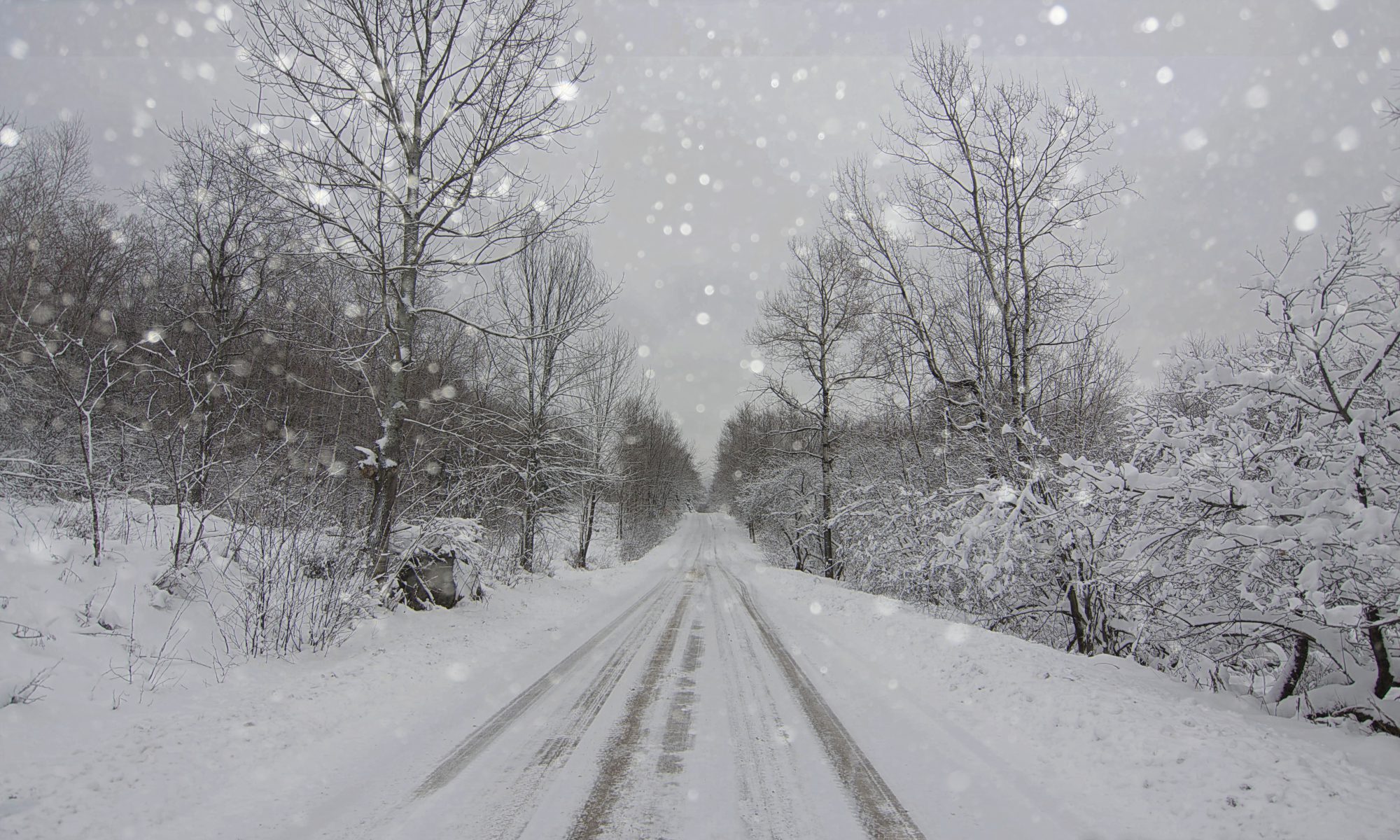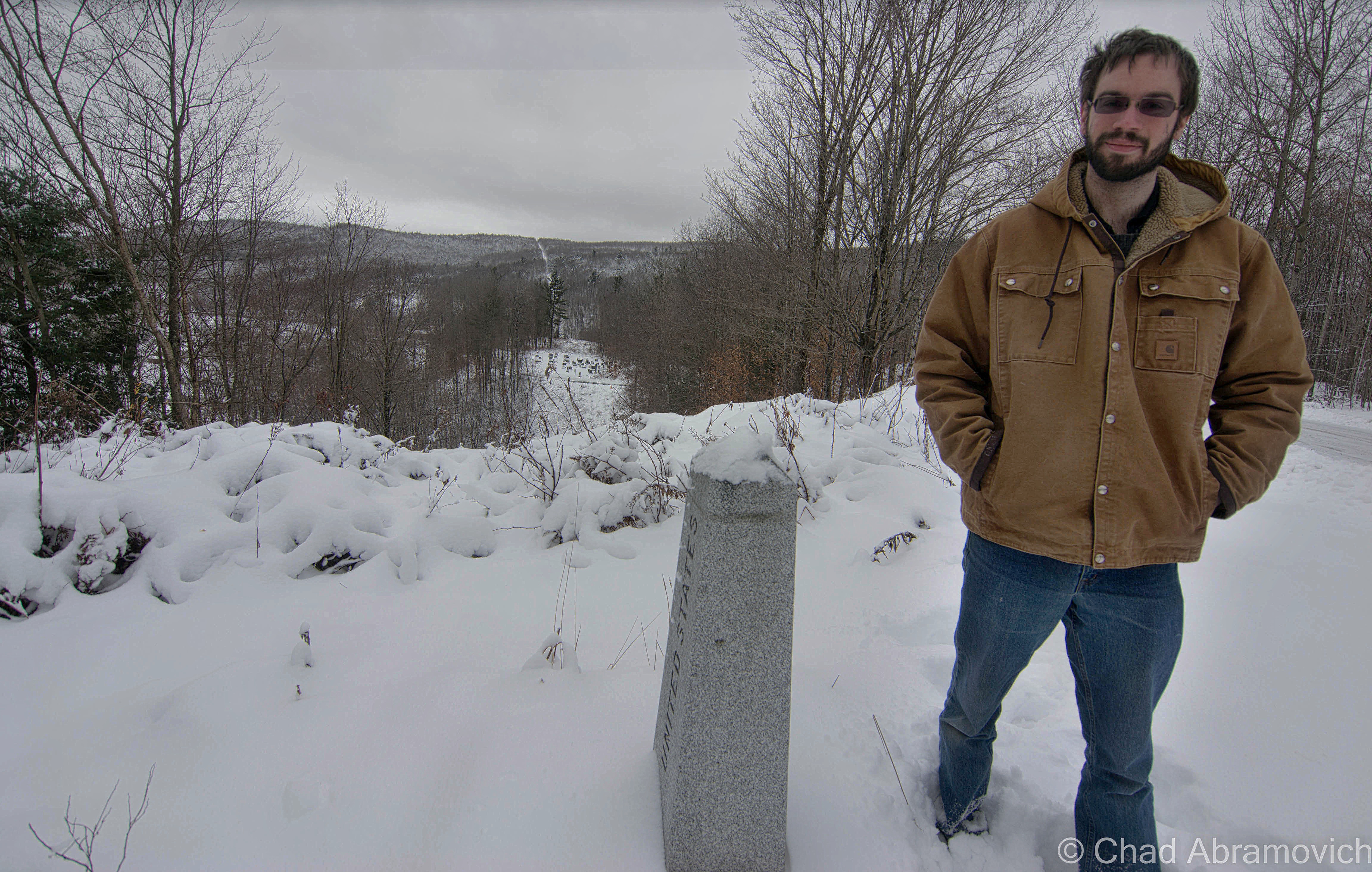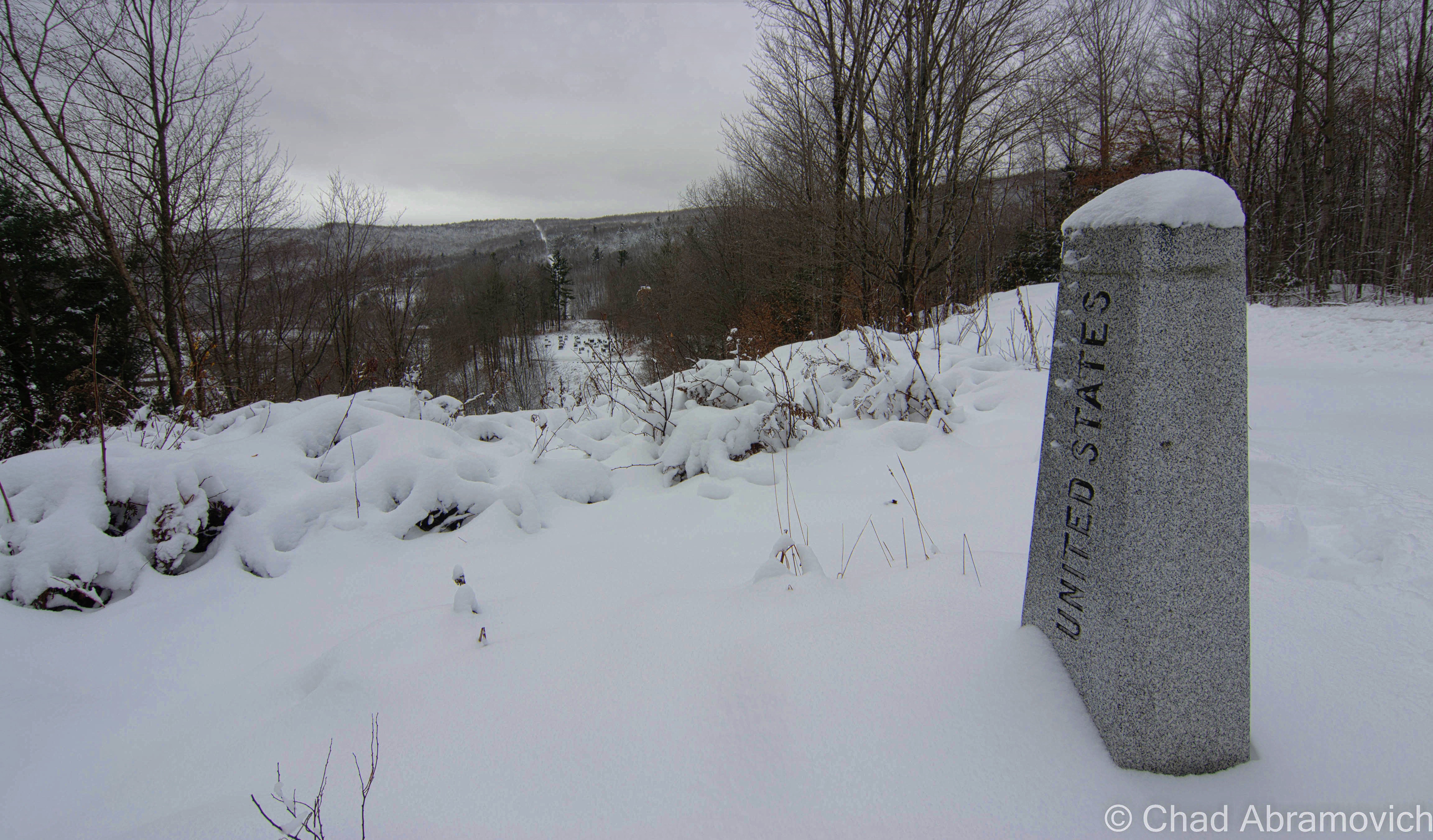The hill country up near hardscrabble East Richford is an older, left behind Vermont of farmhouses with sagging rooflines, boarded up country stores, rivers, rusted iron railroad bridges over narrow underpasses, and toothpick rows of harvested corn stocks left in bleak fields.
It was up in this part of the state under 6 inches of snow and roads that made me thankful for snow tires that I was going oddity hunting.
We were the only car on state route 105A, a pretty desolate spur road connecting route 105 to a sparsely used border crossing at Sutton, Quebec. The bad tarmac ran alongside the hypothermic waters of the Mississqoui as the snow began to tumble down to the ground in an amiable silence. “Man, I love roads that follow rivers” my friend enthused. “Yeah, roads that follow rivers are some of humankind’s’ best achievements” I returned, and we both cracked a grin.
We continued to be the only traffic as we turned onto the dirt main drag of East Richford, which was only a few older wooden homes in various states of decrepitude. Past the abandoned Gulf station, the road sharply right angles at Quebec before beginning its ascent up into the border hills. We passed an old graveyard where the invisible line between the two nations slashed through the middle of, before my friend suddenly stomped on his breaks, our car skidding for a few seconds on the slush and ice. “Oh……” he breathed, looking at the granite boundary marker to our right. “Shit, are we breaking the law? We’re in Canada! Don’t we have to check in?”
“The only law we’re breaking is the law of gravity!” I quipped.
According to Sir Isaac Newton, objects fall. No exceptions. But if Franklin County lore has a flicker of truth to it, perhaps not.
This remote border road that made it’s way through some of Vermont’s most stark and impoverished back country near East Richford is known as “Richford’s Mystery Spot,” according to Joseph E. Citro and Diane E. Foulds in their 2004 book Curious New England: The Unconventional Traveler’s Guide to Eccentric Destinations. The “mystery” is that gravity in this spot reputedly likes to behave unorthodoxly. For example, cars are said to roll uphill! WTF?
These oddities aren’t unique to the Green Mountain State. Various places around the U.S. manifest the same puzzling phenomenon. Nearest to Vermont, there are two “mystery spots” in the Massachusetts towns of Greenfield and Harvard, and one in Middlesex, N.Y., on the awesomely named Spook Hill Road.
Citro and Foulds reported that they weren’t able to locate Richford’s mystery spot. Years ago, in a brown and bleak November, I made my own attempt. Being an avid Vermont enthusiast and local weird worker, I couldn’t pass this one up. I enlisted a friend, who couldn’t contain his mirth when I explained we were aiming to defy gravity, and quickly signed on for the road trip. I guess breaking the laws of physics is a good way to make plans.
The mystery spot is aptly named, I discovered when we turned east out of Richford village toward the looming form of Jay Peak, because it’s no easy place to find. The night before, I had consulted the state atlas and decided that the most likely location was the curiously named East Richford Slide Road, a hilly dirt byway that rolls over the foothills of Jay Peak with a few trailers and abandoned farmhouses along its length, before depositing you back on Route 105 in Jay town. It serpentines over the border a few times, but because you can’t get anywhere in Canada unless you hike through miles of mountain wilderness, the crossings aren’t guarded.
So how do you discover such an area? There had to be a first person to be bewildered here. My research had identified the late Dolph Dewing of Franklin as the first person to report experiencing the mystery spot’s effects in 1978. According to Citro in Weird New England: Your Travel Guide to New England’s Local Legends and Best Kept Secrets, Dewing started by sharing the discovery with his friends, then brought a busload from the Franklin Senior Center to witness the phenomenon.
In October 1985, County Courier reporter Nat Worman accompanied Dewing to the spot and watched as he stopped his 1979 Dodge there and revved it to prove it was in neutral. After about 60 seconds passed, the car began rolling uphill, accelerating gradually from 10 to 15 mph.
My friend and I weren’t so lucky on that windy November day. We parked our car in several places along the rural road and waited. Despite our relocations, nothing happened.
We pulled over again and mulled things over. Did we have to be in Canada for the “mystery” to work, or on the Vermont side? Maybe we just hadn’t found the right spot.
Sitting beneath border skies as the sun shone off the hood of my friend’s Chevy, I wondered if Dewing had been fooled by some sort of optical illusion. Was it really antigravity? Or magnetism? Or a hoax?
Researching later on, I found that the answers may be closer than I expected and rooted in the rational. There are a bunch of “mystery spots” around the globe, some with equally evocative names such as “gravity hills” and “gravity roads.” So, do the laws of physics simply stop applying there?
Nope. What baffles tons of spectators is actually an optical illusion, one that’s been debunked by physicists. Or, at least, that’s the prevailing theory.
“Gravity hills” and the like are places where the geography of the surrounding land produces an illusion, making a downhill slope appear to go uphill. Obstructions on the horizon can be a key factor in creating this illusion, because they rob us of the reliable reference points we use to determine which way is up. The mind, in short, is tricked.
In a 2006 Science Daily article, Brock Weiss, a physics professor at Penn State Altoona, investigates a gravity hill in Bucks County, Penn., and concludes that this local oddity isn’t that odd. “You are, indeed, going downhill even though your brain gives you the impression that you’re going uphill,” Weiss explains. Using GPS, the investigators demonstrated that the hill’s starting point had a greater elevation than its ending point, despite appearances to the contrary. And, if these mystery spots really were gravitational anomalies, wouldn’t your sense of balance and the objects around you be affected, instead of just your vehicle?
Just as I was pretty much convinced that I could put this into my “mystery solved” pile, Linda Collins of the Richford Historical Society brought me back into a sentiment of uncertainty. I phoned the town offices looking for answers, and instead had an awkward silence sent my way. I had almost thought they hung up on me, before the town clerk spoke up and said she had no idea what I was talking about. So she directed my call to Linda, who had a lot to say about Richford’s weird side.
“Oh yeah, I know about the hill. I think it’s called a ‘gravity hill’. I learned about it when I was researching the UFO sightings in town” said an amused Collins.
Back in the 1970s, she related, a few Richford residents reported seeing strange moving lights over town. Wanting to chronicle the frenzy for the Burlington Free Press, Collins made phone calls, which led her to a government facility in Boulder, Colo. She refers to it as “the strange things facility,” because “I don’t remember what they were called — it’s been so long since I’ve talked about this!”
According to Collins, the feds told her that a singular magnetic pull or gravitational force in the Richford area had the potential to “attract things.” They didn’t specify what things, and she surmised there was probably more that they weren’t telling her. “You know, government secrecy? They were probably doing some testing or something and didn’t want that getting out to the public,” Collins said. Later on, Collins learned of the “mystery spot” phenomenon.
“Does the historical society get many inquiries about it?” I asked. “No one up here really knows that much about it,” she said with a laugh. “It was such a small deal when it happened. Lots of folks in town now don’t really know a lot about our history anymore.”
“So what’s your opinion on it? Do you think it’s an illusion, or is there something actually weird with gravity in Richford?”
“Well….I mean, I don’t know what to tell you. Richford is a weird town. If all this business about the UFOs and gravitational pulls are true, then who knows.”
Border towns are weird in general, in both their local lore and for political complications and the infrastructure meant to delineate a sense of placement. Richford’s mythology resume is a bulky one of giant birds that have swooped down and snatched babies, UFOs, giant wolves that may live around the border, a possible “window area” near Jay Peak, and a former rendezvous for rumrunners and smugglers.
But Richford has it easy, compared to what may be New England’s strangest border community, which I hope to check out one day.
If the Richford, VT/Sutton, QC area really does have some sort of unique magnetic force, that would set Vermont’s mystery spot apart from the scores of others around the globe that can be debunked by aesthetic tomfoolery.
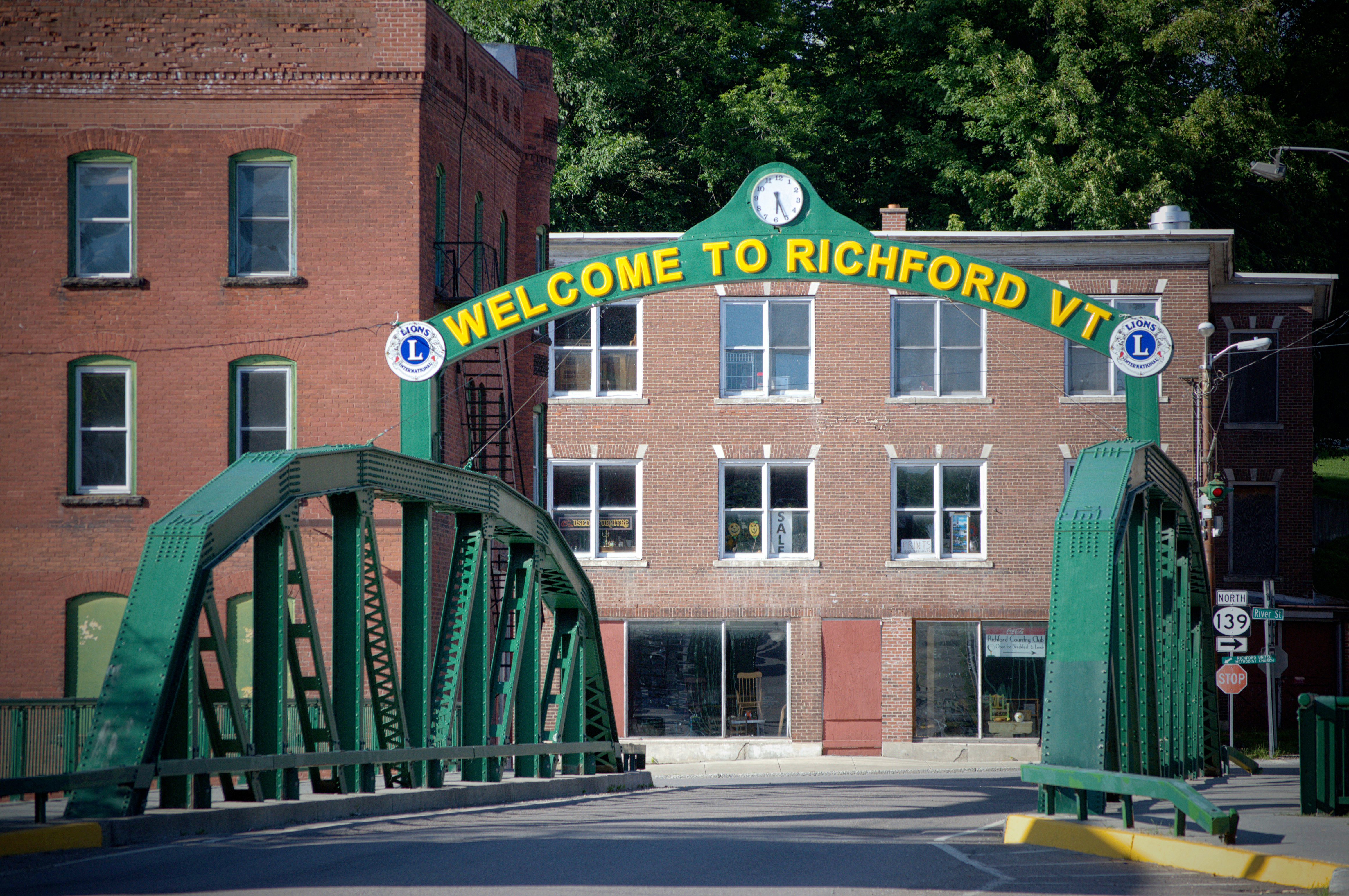
Because I was trying to write about this for Seven Days, I decided that was a great excuse to take another trip up to border country with another friend, and give it another go, this time in a Ford (if that makes any sort of difference)
Back up the East Richford Slide Road, we drove around looking for answers and an outlandishly cool experience, stopping and going almost the entire length of the slick road, with some situationally motivating Jazz coming quietly through the radio.
We think there was one spot where the car rolled in a direction that wasn’t backward, but after getting out of the car and scrutinizing the area, the very very gradual incline of the road may have actually been inconspicuously dipping downhill, but the eye is fooled from a larger uphill lip of an intersection beyond it which forms the horizon line. Was this the spot? If so, Dewing’s car was recorded going at least 15mph, while we were going 5.
I’m not sure if I left empty handed or not to be honest, but it was an enjoyable way to spend my morning.
Whatever the explanation for the mystique, the Richford Mystery Spot is still one of my favorite examples of Vermont obscura, because it’s accessible and fun. If only it were a little easier to locate the exact spot where the optical illusion — if that’s what it is — kicks in.
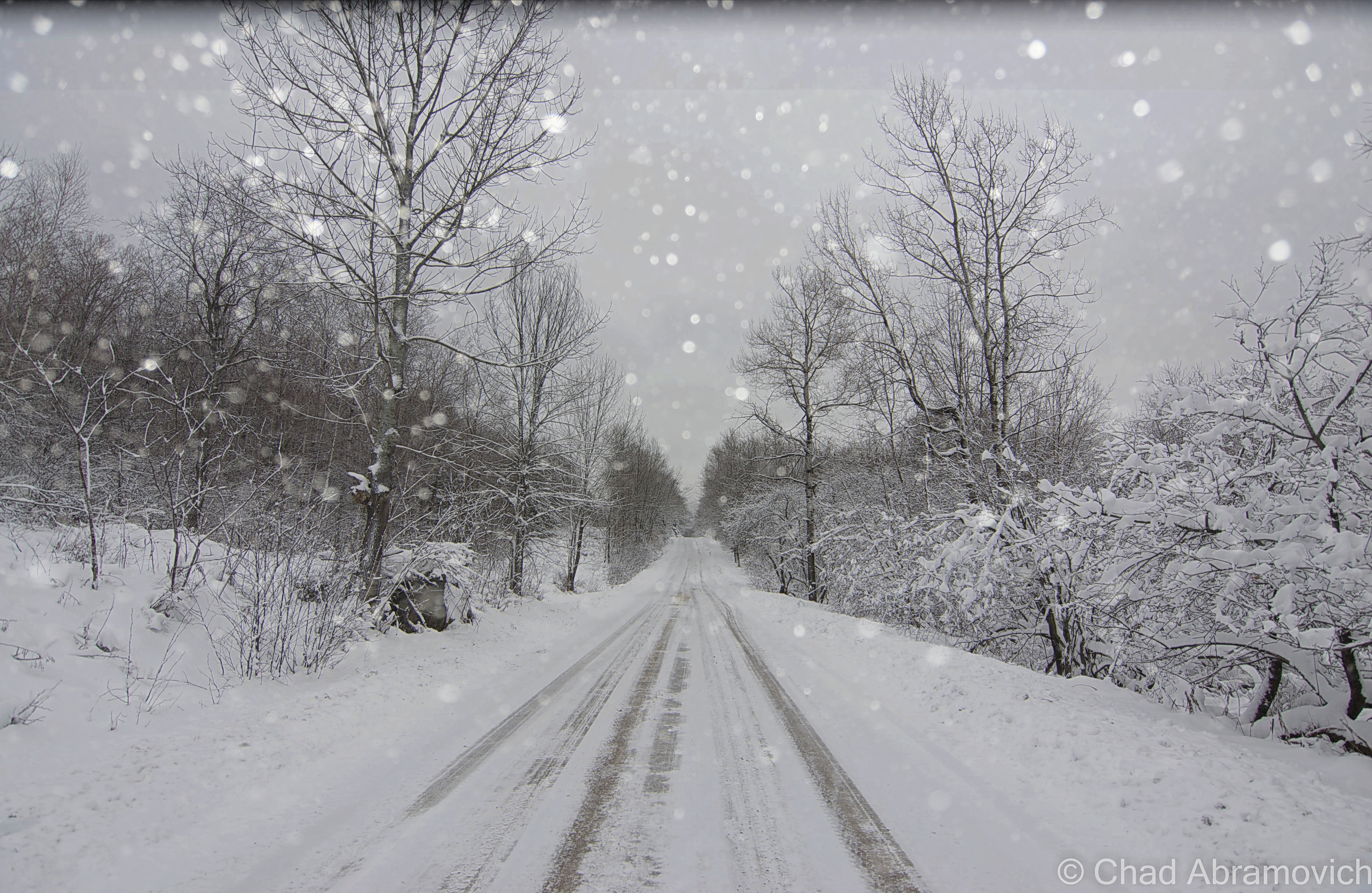
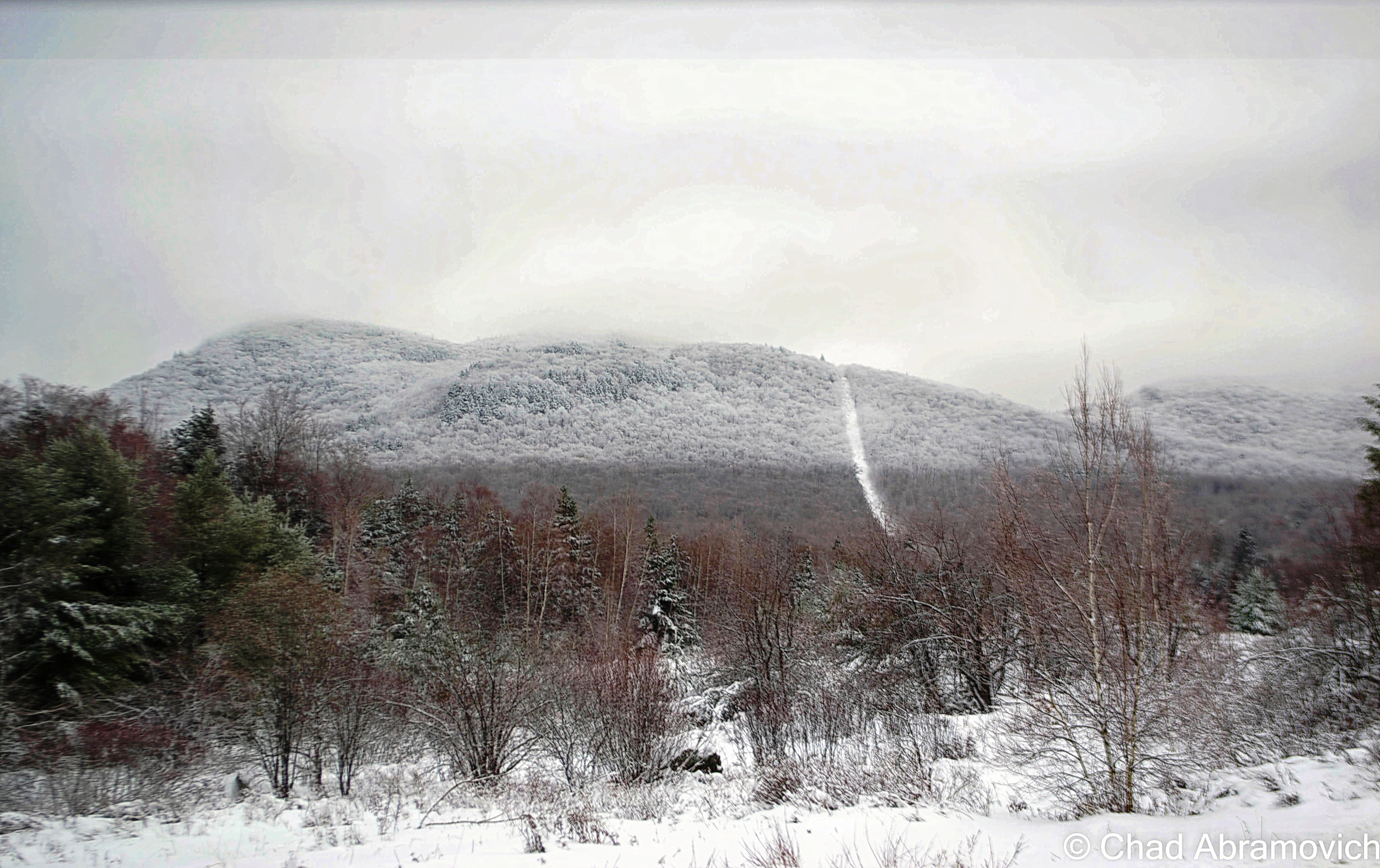
—————————————————————————————————————————————–
To all of my fans and supporters, I am truly grateful and humbled by all of the support and donations throughout the years that have kept Obscure Vermont up and running.
I spend countless hours researching, writing, and traveling to produce and sustain this blog. Obscure Vermont is funded entirely on generous donations that you the wonderful viewers and supporters have made. Expenses range from internet fees to host the blog, to investing in research materials, to traveling expenses. Also, donations help keep me current with my photography gear, computer, and computer software so that I can deliver the best quality possible. Seriously, even the small cost equivalent to a gas station cup of coffee would help greatly! Especially now, as my camera is in need of repairs and I can’t afford the bill, which is distressing me greatly.
If you value, appreciate, and enjoy reading about my adventures please consider making a donation to my new Gofundme account or Paypal. Any donation would not only be greatly appreciated and help keep this blog going, it would also keep me doing what I love. Thank you!
Gofundme: https://www.gofundme.com/b5jp97d4


